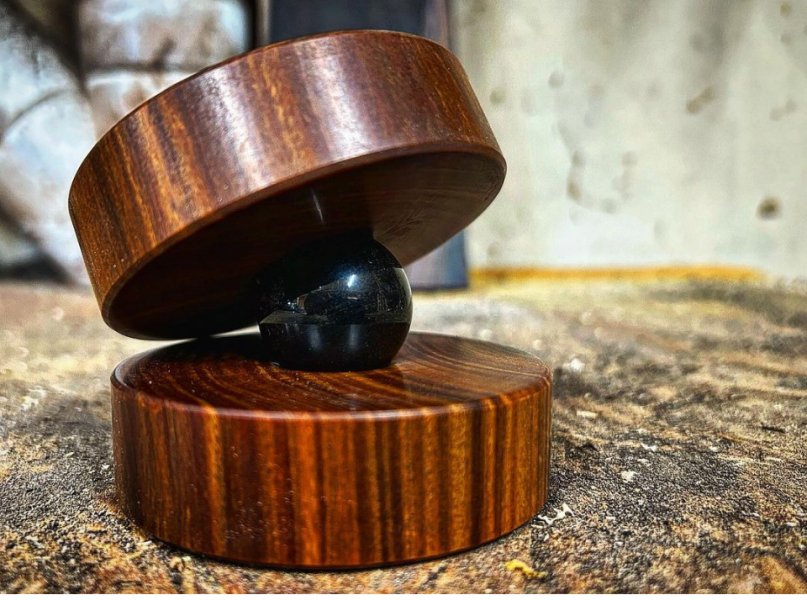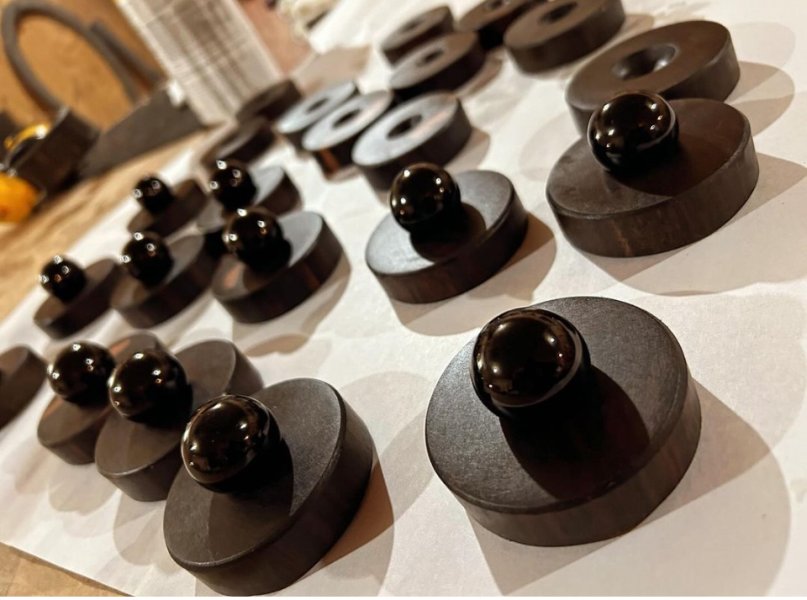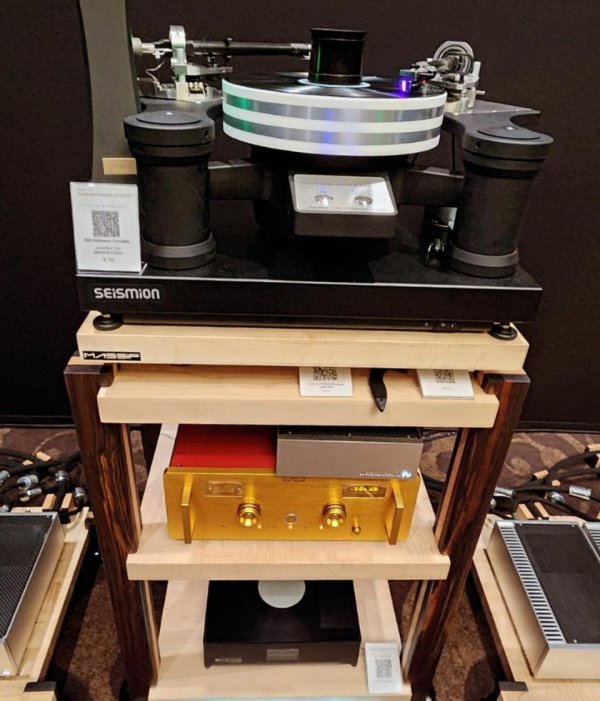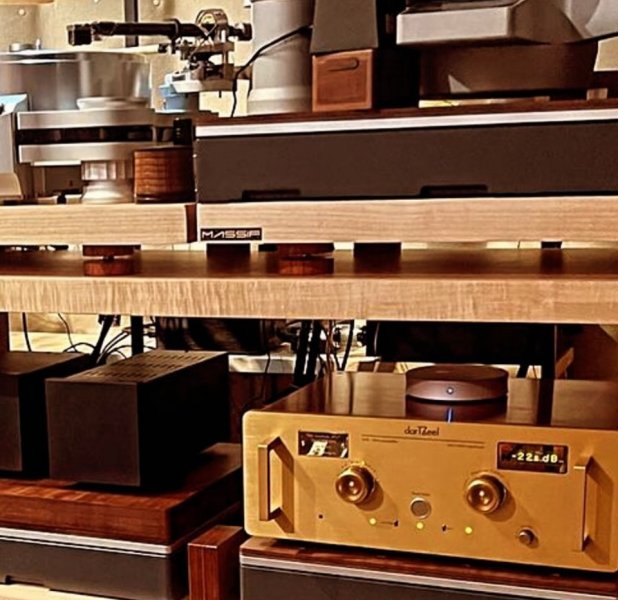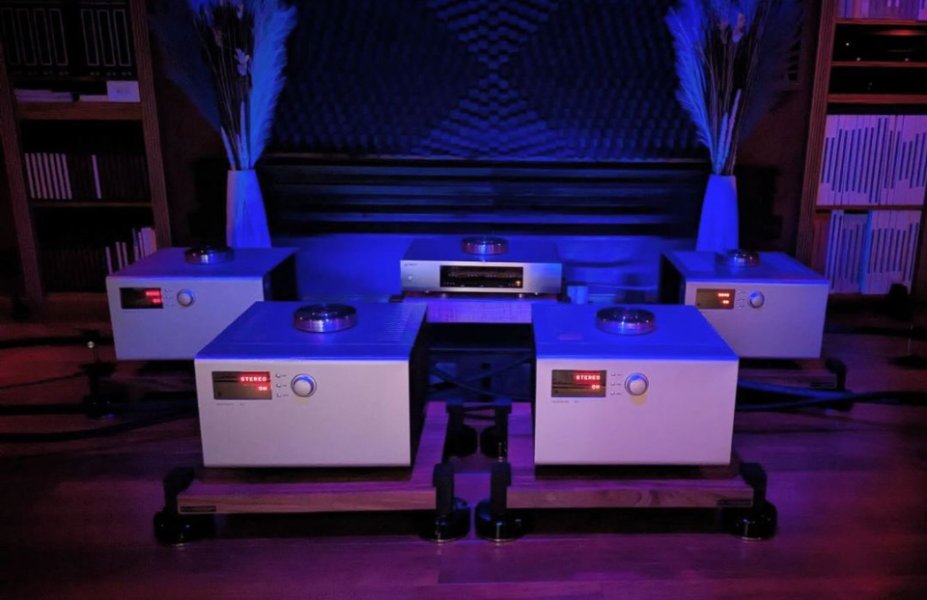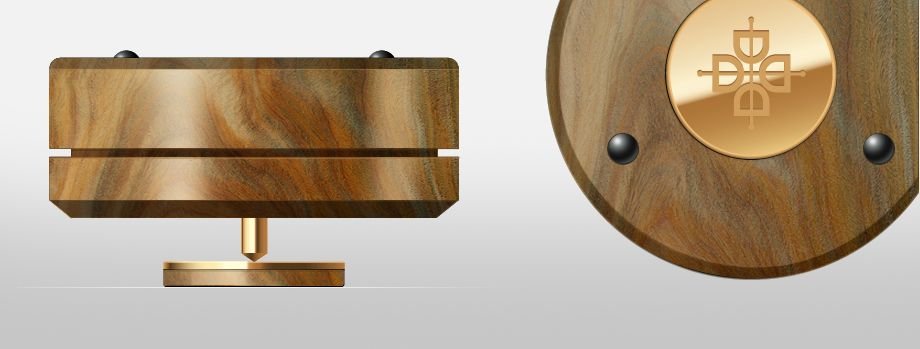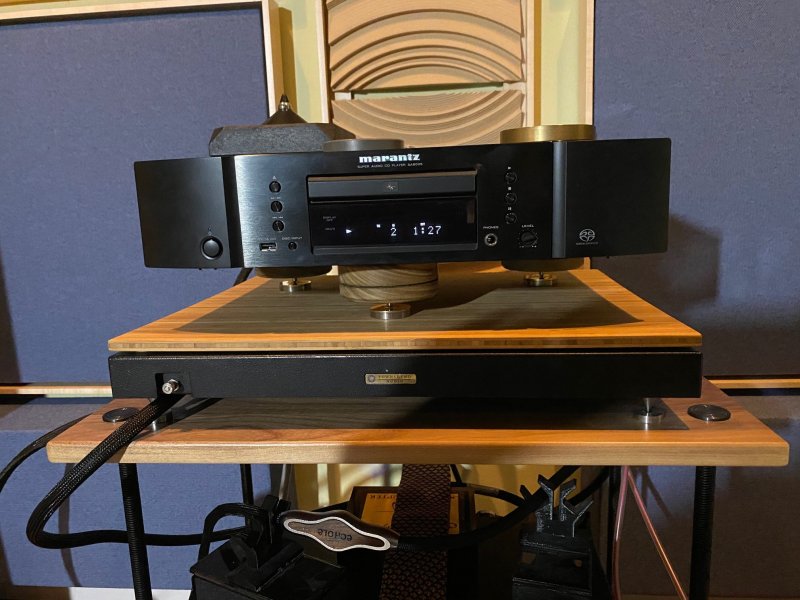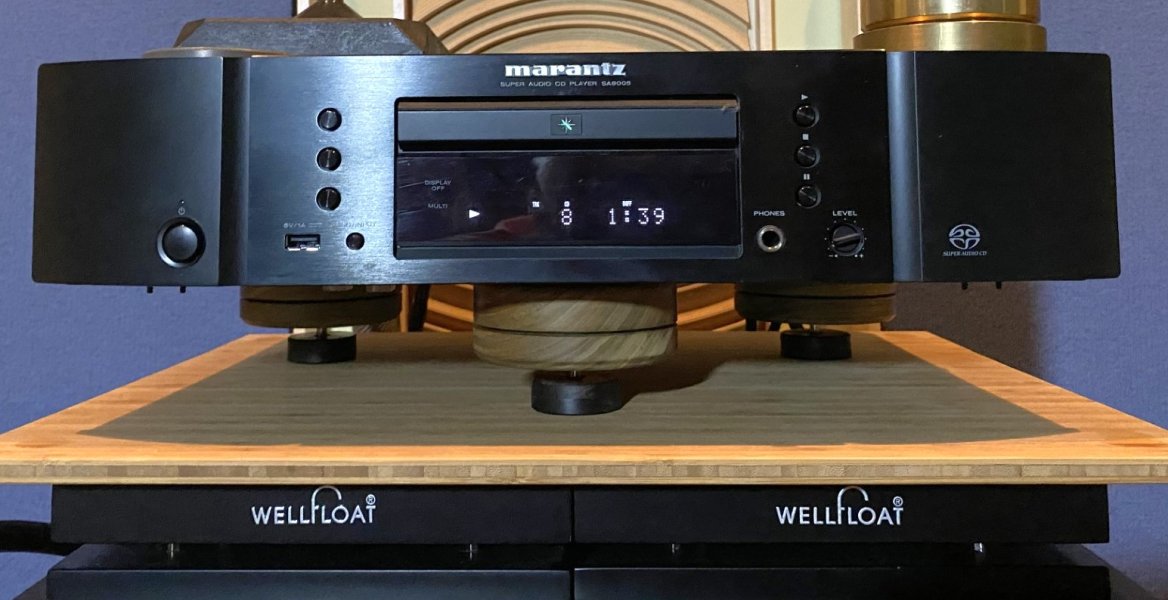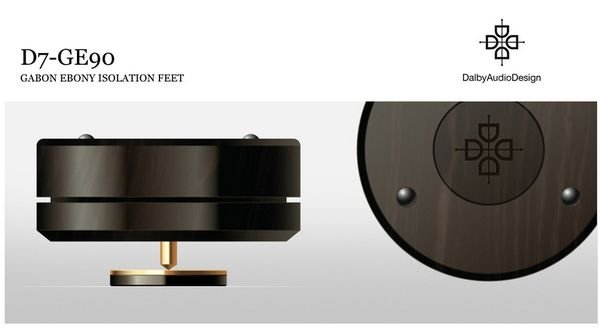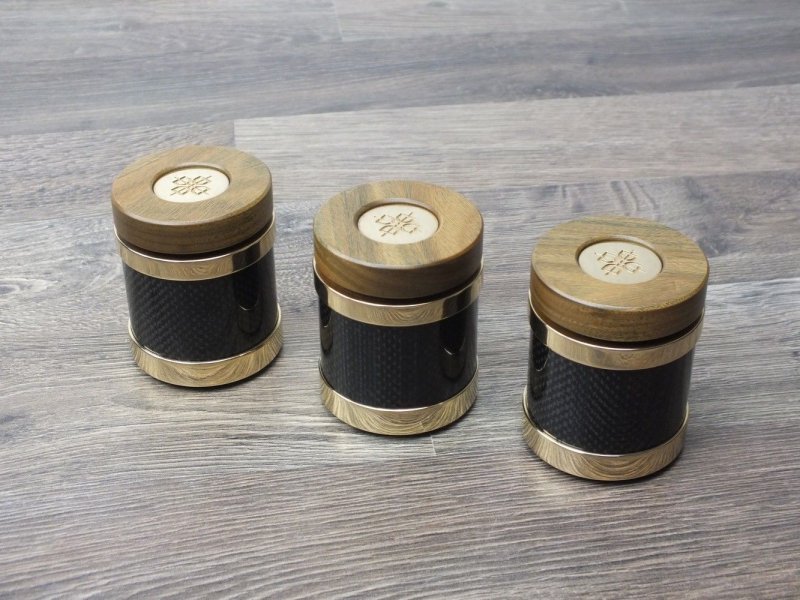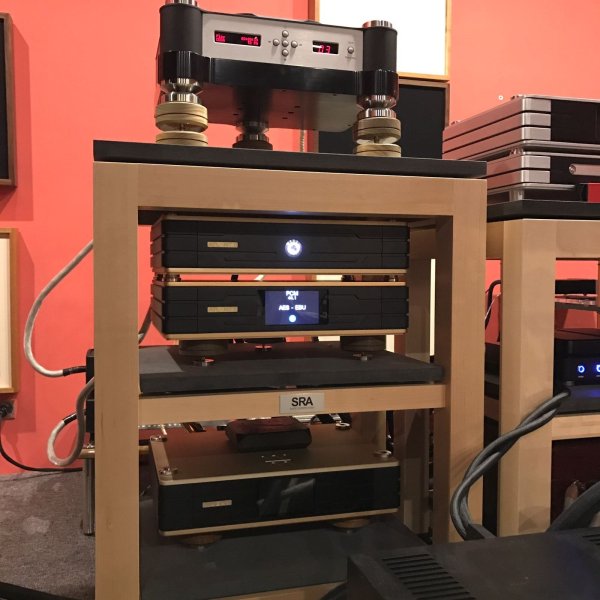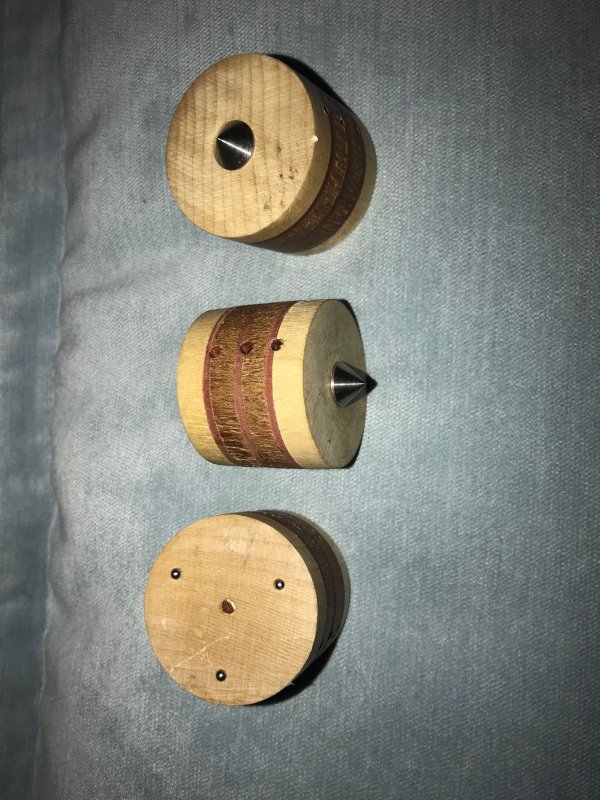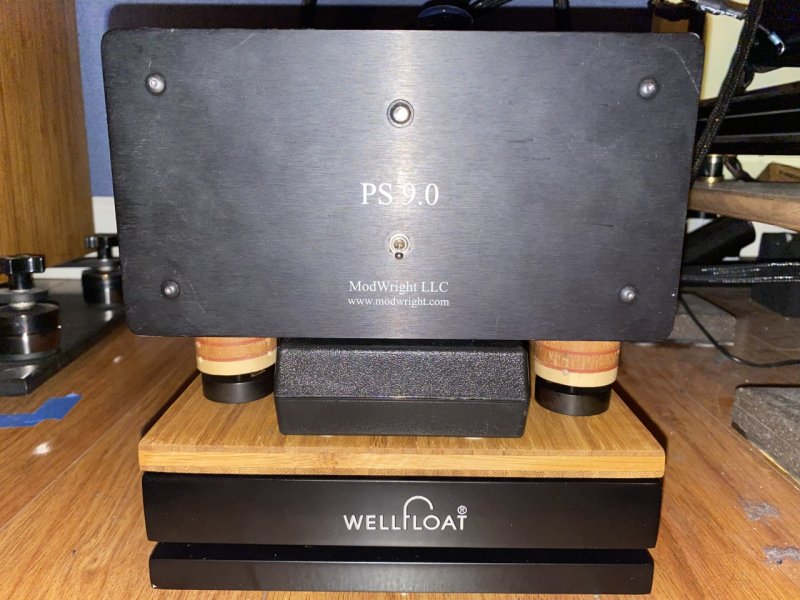Here’s some Massif Audio ebony ebony footers, and also some lignum vitae footers. Always with the obsidian sphere. They work well. Several notables personalities on the WBF use them. They tough to see in pics sometimes, but they’re here.
Some wood based footers
- Thread starter Tuckers
- Start date
You are using an out of date browser. It may not display this or other websites correctly.
You should upgrade or use an alternative browser.
You should upgrade or use an alternative browser.
Dalby Audio's Lignum Vitae feet are the best sounding footers I've ever heard at any price. They drain/dissipate internal component resonances while also tuning a component's resonant signature to be more sympathetic to music. They will also provide some isolation when used alone, but I've always combined them with a movement based (air or pendulum) decoupling platform. The combination is unmatched in my experience.Here’s some Massif Audio ebony ebony footers, and also some lignum vitae footers. Always with the obsidian sphere. They work well. Several notables personalities on the WBF use them. They tough to see in pics sometimes, but they’re here.
Attachments
FYI: there was an earlier ebony version, a double LV version, and a combination carbon fiber and LV version:Dalby Audio's Lignum Vitae feet are the best sounding footers I've ever heard at any price. They drain/dissipate internal component resonances while also tuning a component's resonant signature to be more sympathetic to music. They will also provide some isolation when used alone, but I've always combined them with a movement based (air or pendulum) decoupling platform. The combination is unmatched in my experience.
Attachments
Last edited:
The ASI Top Line feet use different woods (rosewood and maple) but are similar in design (central metal shaft with three embedded metal dots contacting the component bottom) to and much less expensive than their Dalby counterparts. They are my 2nd favorite footer, also used with motion based decoupling platforms.FYI: there was an earlier ebony version, a double LV version, and a combination carbon fiber and LV version:
Attachments
I’ve seen them and know someone who has a set , I’m told they don’t isolate at all. How do you see isolation ? No snarkiness, I’m genuinely interested as I see a lot of folks use that word incorrectly, thanksDalby Audio's Lignum Vitae feet are the best sounding footers I've ever heard at any price. They drain/dissipate internal component resonances while also tuning a component's resonant signature to be more sympathetic to music. They will also provide some isolation when used alone, but I've always combined them with a movement based (air or pendulum) decoupling platform. The combination is unmatched in my experience.
I have not seen a technical explanation of their design, and as I described in my post I use them for draining/dissipating/tuning internal component resonances, on top of movement based isolation platforms (currently Wellfloat, previously Townshend Seismic Sink air platform). Note in post #23 above, third photo, which is from Audio Exotics, single and double Dalby LV feet are used between components and shelves of a top tier isolating rack (SRA in this case). This is the way you typically see them deployed. I can't explain how used alone they might "isolate". I would speculate based on Lee Dalby's description of the wooden disc as a "reservoir" that vibrational energy is dissipated within the pore structure of the wood, and into the air via the wood disc resonating. So while I would not describe the Dalby footer as an isolation device in the conventional sense, if the wooden disc inhibits the transmission of vibrational energy along the central shaft that supports it, then it is providing some isolation. I can tell you from experience that the Dalby feet do not impart extra warmth to the component the way the similarly shaped Shun Mook footers do, the difference being that the component sits directly on the wood in the case of Shun Mook. Yet the Dalby feet do give a component a subtly more timberally accurate, tonally rich sound, in addition to imparting a level of articulation, quiet, and ease that I've not achieved with any other device. And while the wooden disc on the Dalby footer may inhibit transmission of vibrational energy, you can tune it slightly by switching between the stock all metal shaft point cups and tone wood spike shoes. In my system replacing the stock metal cone cups with Yamamoto ebony cups produced the ideal balance. It is a more compex device than it would appear to be at first glance.I’ve seen them and know someone who has a set , I’m told they don’t isolate at all. How do you see isolation ? No snarkiness, I’m genuinely interested as I see a lot of folks use that word incorrectly, thanks
Last edited:
As mentioned above, the Dalby feet increase resoution, articulation, ease, quiet, timbral accuracy, etc. without adding excessive warmth the way the Shun Mook footers can. This may result from the fundamental design difference where the component rests on three small ceramic spheres imbedded in the wood with the Dalby vs. sitting directly on the wood with Shun Mook. I have heard the Shun Mook footers sound great in a couple of systems, but have also observed/participated in colleagues' experiments with them where they added far too much warmth and overall degraded the sound. I have not heard an application of the Dalby feet that did not produce a significant improvement.How do these Dalby ebony pieces compare sonically to Shun Mooks?
Very cool! Thanks for sharing.One good material for footers is: Palmwood
I have not had really too much difference using cork, rosewood, balsawood or bamboo, but these palmwood cubes i made myself have had clear audible effect under components:
View attachment 134602
4x4cm cubes, made these myself from blank.
Never seen anyone use these, stumbled on them by accident..
A bit warmer, more open, clear, and less sibilant sound with these.
I think it might have something to do with large grains that differs from usual woods, and i use them that grain direction
straight from componen to ground (as in picture).
One of the reasons you might not see these, is that they are bit hard to do right since palmwood can lose its grains easily, so you must oil with plasticising effets like walnutoil, (i use this) or use lacquer on the sides. Also cut with tablesaw sides taped.
After this, it is simply marvellous.
View attachment 134603
Obviously lots of channels/pores/tubular structures for vibrational energy to bounce around in and dissipate.One good material for footers is: Palmwood
I have not had really too much difference using cork, rosewood, balsawood or bamboo, but these palmwood cubes i made myself have had clear audible effect under components:
View attachment 134602
4x4cm cubes, made these myself from blank.
Never seen anyone use these, stumbled on them by accident..
A bit warmer, more open, clear, and less sibilant sound with these.
I think it might have something to do with large grains that differs from usual woods, and i use them that grain direction
straight from componen to ground (as in picture).
One of the reasons you might not see these, is that they are bit hard to do right since palmwood can lose its grains easily, so you must oil with plasticising effets like walnutoil, (i use this) or use lacquer on the sides. Also cut with tablesaw sides taped.
After this, it is simply marvellous.
View attachment 134603
I think so too, it is like a channel of pores to transit and dissipate vibration into heat.Obviously lots of channels/pores/tubular structures for vibrational energy to bounce around in and dissipate.
Maybe i should make footers like Dalby Audio and Shun Mook out of this palmwood, would be interesting..
I could use copper/obsidian sphere as top or middle layer.
Looks like it would be worth experimenting with. Just from googling it, palmwood is sustainably grown (it is from coconut trees), and has good tonal properties. People are experimenting with it for musical instrument use (e.g., guitar fret boards).I think so too, it is like a channel of pores to transit and dissipate vibration into heat.
Maybe i should make footers like Dalby Audio and Shun Mook out of this palmwood, would be interesting..
I could use copper/obsidian sphere as top or middle layer.
Similar threads
- Replies
- 11
- Views
- 1K
- Replies
- 9
- Views
- 632
| Steve Williams Site Founder | Site Owner | Administrator | Ron Resnick Site Owner | Administrator | Julian (The Fixer) Website Build | Marketing Managersing |



